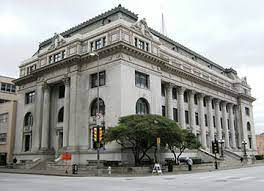In a world captivated by modernity, antiquing offers a delightful journey back in time. This pursuit of the past, laden with historical treasures, invites enthusiasts to explore the tangible remnants of bygone eras. From dusty bookshops to hidden gems in flea markets, antiquing beckons those with a penchant for nostalgia and a desire to unravel the stories embedded in aged artifacts.
Table of contents
- 10 Things You Don’t Know About Antiquing
- #1. Hidden Histories: Unveiling the Past Through Antiquing
- #2. Art of Restoration: Breathing New Life into Antiques
- #3. Collector’s Lingo: Decoding the Language of Antiquing
- #4. Global Treasures: Antiquing Across Continents
- #5. Forgery Challenges: Navigating the Antiquing Minefield
- #6. Market Trends: Riding the Waves of Antiquing Popularity
- #7. Unexpected Values: Uncovering Treasures in Unlikely Places
- #8. Thrift Store Goldmines: Affordable Antiquing Adventures
- #9. DIY Antiquing: Crafting Personalized Treasures
- #10. Community of Collectors: Connecting Through Antiquing
- Frequently Asked Questions
- Conclusion
- References
- Recommendations
10 Things You Don’t Know About Antiquing
Antiquing is more than a mere transaction of goods; it’s an immersive journey into hidden histories. Each antique, whether a weathered piece of furniture or a delicate trinket, carries a story waiting to be unraveled. It’s a tangible connection to bygone eras, offering enthusiasts a unique opportunity to explore the lives and experiences of those who came before. Every imperfection speaks volumes, from the patina on an antique mirror to the hand-carved details of a vintage chair, creating a tapestry of narratives that transcends time.
Delving into the hidden histories of antiques involves research, curiosity, and a keen eye for detail. Provenance, or the documented history of ownership, becomes a crucial aspect of understanding an item’s past. This pursuit often leads collectors down fascinating paths, uncovering tales of previous owners, historical events, and the cultural contexts that shaped these artifacts. Antiquing becomes a form of historical exploration, turning each acquisition into a tangible piece of the past.
#2. Art of Restoration: Breathing New Life into Antiques
Behind the scenes of many exquisite antiques lies the meticulous art of restoration. Skilled artisans and conservators play a pivotal role in preserving the integrity and beauty of aged artifacts. The restoration process involves a delicate balance—renewing without erasing the marks of time. From repairing thin porcelain to refinishing wooden furniture, these artisans possess a mastery that bridges the gap between the past and the present.
Understanding the art of restoration adds depth to the appreciation of antiques. It’s not just about acquiring old items; it’s about witnessing the revival of craftsmanship and artistry that might otherwise be lost to time. Whether reviving faded paintings or reupholstering vintage furniture, restoration breathes new life into antiquities, ensuring they continue to enchant for generations to come.
#3. Collector’s Lingo: Decoding the Language of Antiquing
Antiquing comes with its lexicon, a language spoken by seasoned collectors and enthusiasts. Learning this collector’s lingo adds a layer of sophistication to the pursuit, allowing individuals to navigate the world of antiques confidently. Terms like “patina,” referring to the surface appearance of an object that comes with age, or “provenance,” denoting the documented history of an item, become integral parts of the collector’s vocabulary.
Understanding this specialized language provides insights into the nuances of antiquing. It’s not merely about aesthetics; it’s about recognizing the intrinsic value of an item beyond its outward appearance. As collectors delve deeper into this linguistic realm, they gain a deeper appreciation for each antique’s craftsmanship, materials, and historical significance. The collector’s terminology, in essence, becomes a key to unlocking the stories held within the artifacts.
#4. Global Treasures: Antiquing Across Continents
Antiquing is a global adventure that transcends geographical boundaries. Enthusiasts can journey through European markets and Asian bazaars or explore the rich history of African artifacts. Each continent contributes a unique flavor to the world of antiques, showcasing diverse craftsmanship, materials, and cultural influences. Whether it’s a centuries-old tapestry from a French flea market or a hand-carved mask from an African artisan, global antiquing offers a kaleidoscopic view of human history through tangible artifacts.
Exploring antiques from different continents gives collectors a broader perspective on cultural heritage. It’s not just about acquiring objects; it’s about fostering an appreciation for the myriad ways human creativity and craftsmanship have evolved across time and place. Global treasures, therefore, become more than just collectibles—they are windows into the shared history of humanity.
Antiquing, with its allure of historical authenticity, isn’t immune to the challenges of forgery. As the demand for rare and valuable artifacts grows, so does the incentive for unscrupulous individuals to produce convincing imitations. Distinguishing genuine treasures from clever fakes becomes a skill for avid antiquers. Authentication methods, provenance research, and a keen eye for detail are essential in navigating the minefield of forgery challenges.
The antiquing world is rife with tales of unsuspecting buyers falling victim to skillfully crafted replicas. Whether it’s an intricately faked signature on a painting or a carefully aged piece meant to mimic centuries of wear, the market demands a vigilant approach. Collectors often collaborate with experts, utilize advanced testing techniques, and stay informed about emerging forgery trends to safeguard their acquisitions and maintain the integrity of their collections.
#6. Market Trends: Riding the Waves of Antiquing Popularity
Antiquing isn’t static; it experiences trends and cycles that influence the popularity of specific periods, styles, or antiques. Understanding these market trends is crucial for collectors who aim to stay ahead of the curve. What may be a sought-after item today might fall out of favor tomorrow, and vice versa. Savvy antiquers immerse themselves in market analyses, attending auctions, and staying connected with industry experts to discern the shifting tides of antiquing preferences.
Whether it’s the resurgence of mid-century modern furniture or a renewed interest in Art Deco aesthetics, anticipating market trends adds an element of strategy to antiquing. Collectors with an eye for the future appreciate the historical value of their acquisitions and recognize the potential investment value in aligning with emerging market demands.
#7. Unexpected Values: Uncovering Treasures in Unlikely Places
Antiquing isn’t solely reserved for high-end specialty shops. The realm of unexpected values opens up when collectors broaden their horizons to thrift stores, garage sales, and overlooked corners of flea markets. Here, treasures often lie undiscovered, waiting to be unearthed by the discerning eye. Items with remarkable historical or aesthetic value can be found at affordable prices, providing collectors with a sense of accomplishment and a unique story behind their acquisitions.
The thrill of stumbling upon an unexpected gem in a less conventional setting adds an element of excitement to the antiquing experience. It reinforces the idea that valuable artifacts can be hidden in plain sight, challenging collectors to venture beyond the well-trodden paths and explore the unexplored nooks of the antique market.
#8. Thrift Store Goldmines: Affordable Antiquing Adventures
Contrary to the notion that antiques are exclusively found in high-end galleries, thrift stores emerge as unsuspected goldmines for the astute antique hunter. These treasure troves offer diverse items, from vintage clothing to classic home furnishings, often at a fraction of the cost one might expect to pay in specialized antique shops.
Thrift store antiquing requires a keen eye and a measure of patience. Collectors sift through myriad items, each with the potential to be a hidden gem. It’s a testament to the idea that valuable antiques don’t always come with exorbitant price tags. The thrill of finding a genuine piece of history in a thrift store not only adds to the collector’s satisfaction but also reinforces the democratic nature of antiquing, making it accessible to a broader audience.
#9. DIY Antiquing: Crafting Personalized Treasures
Antiquing isn’t limited to acquiring existing artifacts; it also involves the art of do-it-yourself (DIY) antiquing. This creative approach allows individuals to transform new or ordinary items into personalized antiqued masterpieces. Techniques such as distressing, aging, and patina application empower DIY enthusiasts to infuse a sense of history into their possessions, whether it’s wooden furniture, metal decor, or even modern clothing.
Engaging in DIY antiquing satisfies the creative urge and provides a hands-on understanding of the processes involved in aging and distressing materials. It’s a form of artistic expression that allows individuals to imbue their belongings with a unique character, blending the charm of the past with contemporary aesthetics. From antique-inspired home decor to custom vintage clothing, DIY antiquing fosters a sense of connection to history through creative expression.
#10. Community of Collectors: Connecting Through Antiquing
Antiquing isn’t a solitary pursuit; it’s a vibrant community of collectors and enthusiasts. Sharing stories, insights, and discoveries with fellow antiquers adds a social dimension to the hobby. Whether participating in antique forums, attending collector meet-ups, or collaborating on restoration projects, the community of collectors fosters a sense of camaraderie and mutual appreciation for historical artifacts.
Being part of this community provides access to a wealth of knowledge and expertise. It’s a space where seasoned collectors mentor newcomers, where tips on authentication and restoration are freely shared, and where the joy of finding a hidden gem is collectively celebrated. The community of collectors transforms antiquing from a personal passion into a shared cultural endeavor, creating connections that span not only time but also the diverse backgrounds of those who cherish the beauty of the past.
Frequently Asked Questions
Antiquing is collecting, buying, or exploring items from the past, typically characterized by historical value, craftsmanship, and age.
Authentication involves research, examining provenance (history of ownership), consulting experts, and sometimes using advanced testing methods to verify the legitimacy of an antique.
No, antiques vary widely in price. While some may be high-end and valuable, unexpected treasures can be found at more affordable prices in thrift stores or flea markets.
Absolutely. DIY antiquing allows individuals to apply aging techniques to new items, creating a vintage aesthetic and personalizing belongings with a touch of history.
Yes, antiques are traded globally. Collectors can explore markets across continents, discovering diverse artifacts showcasing cultural influences and historical narratives.
Conclusion
Antiquing is not merely a pursuit of objects from the past; it’s a captivating journey that unveils hidden histories, fosters artistic restoration, and connects a diverse community of enthusiasts. From navigating forgery challenges to discovering unexpected values in thrift stores, the world of antiquing offers a rich tapestry of experiences, inviting individuals to explore, appreciate, and share the timeless allure of historical artifacts.
References
● countryliving.com: 10 things you didn’t know about antiques.
● home.howstuffworks.com: 10 things you should know about antiques.





